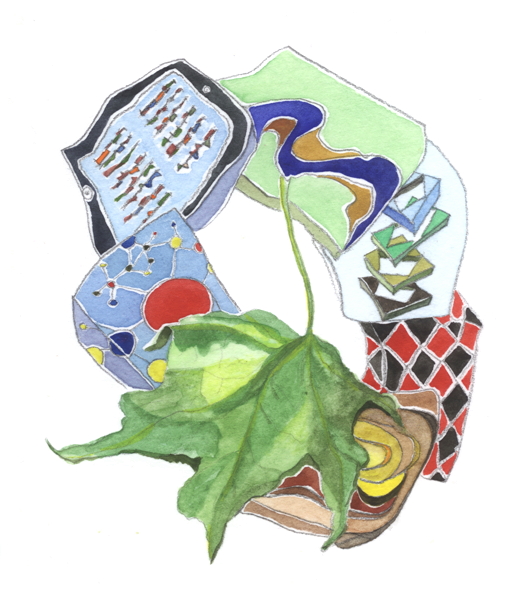
|
|
| 9.18.2011 |
Maple leaf phylogon. The inevitable result of integration.
In this chapter the focus of our story transitions from us listening to the internal dialog of a programmer's mind to us tagging along and watching him navigate the world outside. This shift of scenes takes place at the same time our storyteller refocuses his gaze from examining nature to examining his imagination. So our story idles, for the moment, at the center of this cyclone, in the vortex formed by these opposite movements, a stationary front that will probably take several days and some lengthy conjecture about the nature of cycles and phylogons to clear. In his novel 'The Three Stigmata of Palmer Eldrich', Philip K. Dick goes to great lengths to show how experience marks us in ways that can't be undone. The programmer experienced a change that he couldn't explain. Whatever got into him, it forced him into a greater awareness of his senses (to his benefit). We know that this hyper-awareness was imprinted because plant drawings keep showing up in the cycles. The plant studies that seemed to me to be a natural break for myself from the writing of Chapter Two simultaneously played a part in the story. Let's call them Chapter Three because it turns out that the harlequin, enjoying the body he now shared, was having an extended romp; finding out just what human eyes could see. |
| Previous Drawing | Home | Next Drawing |